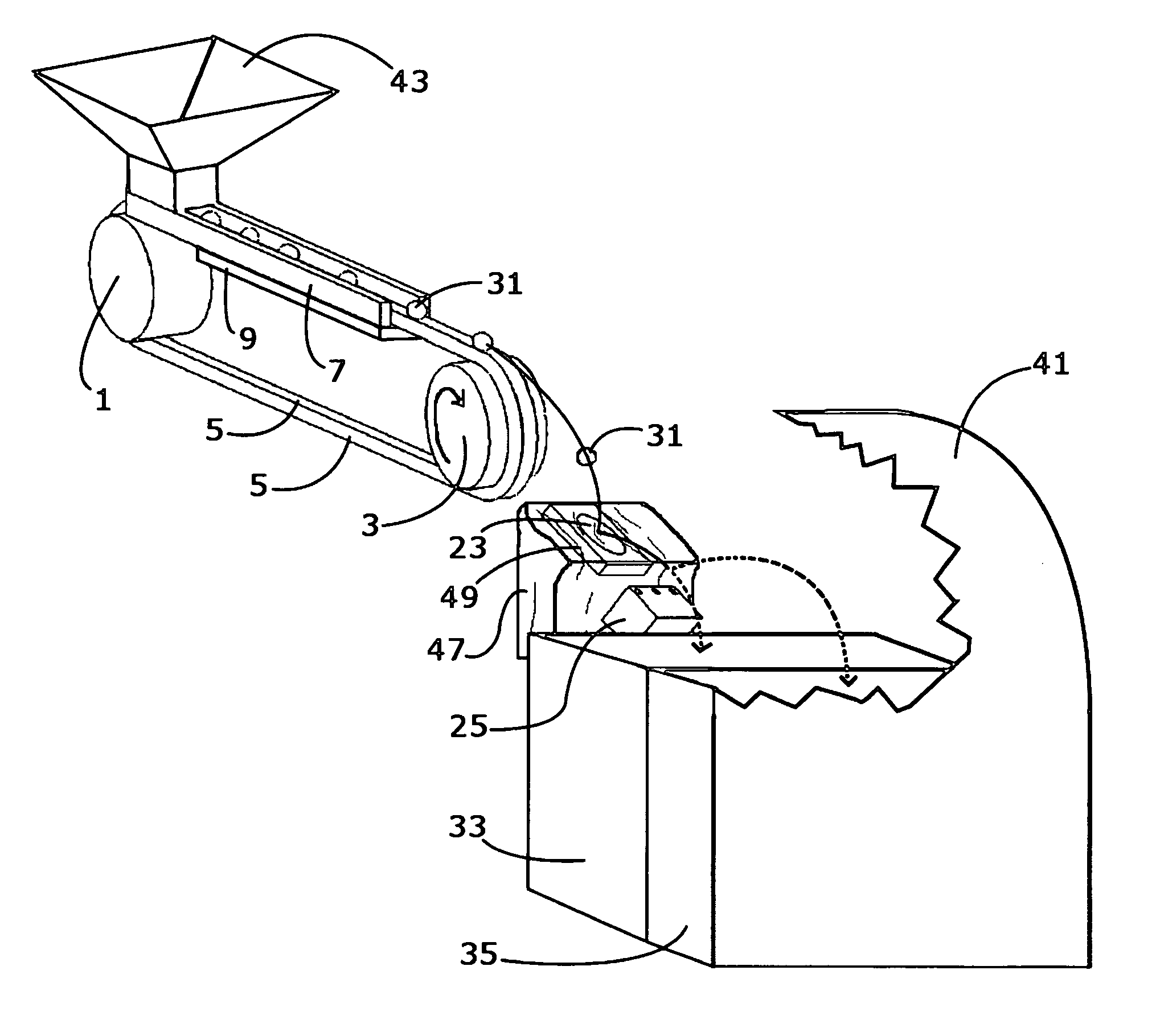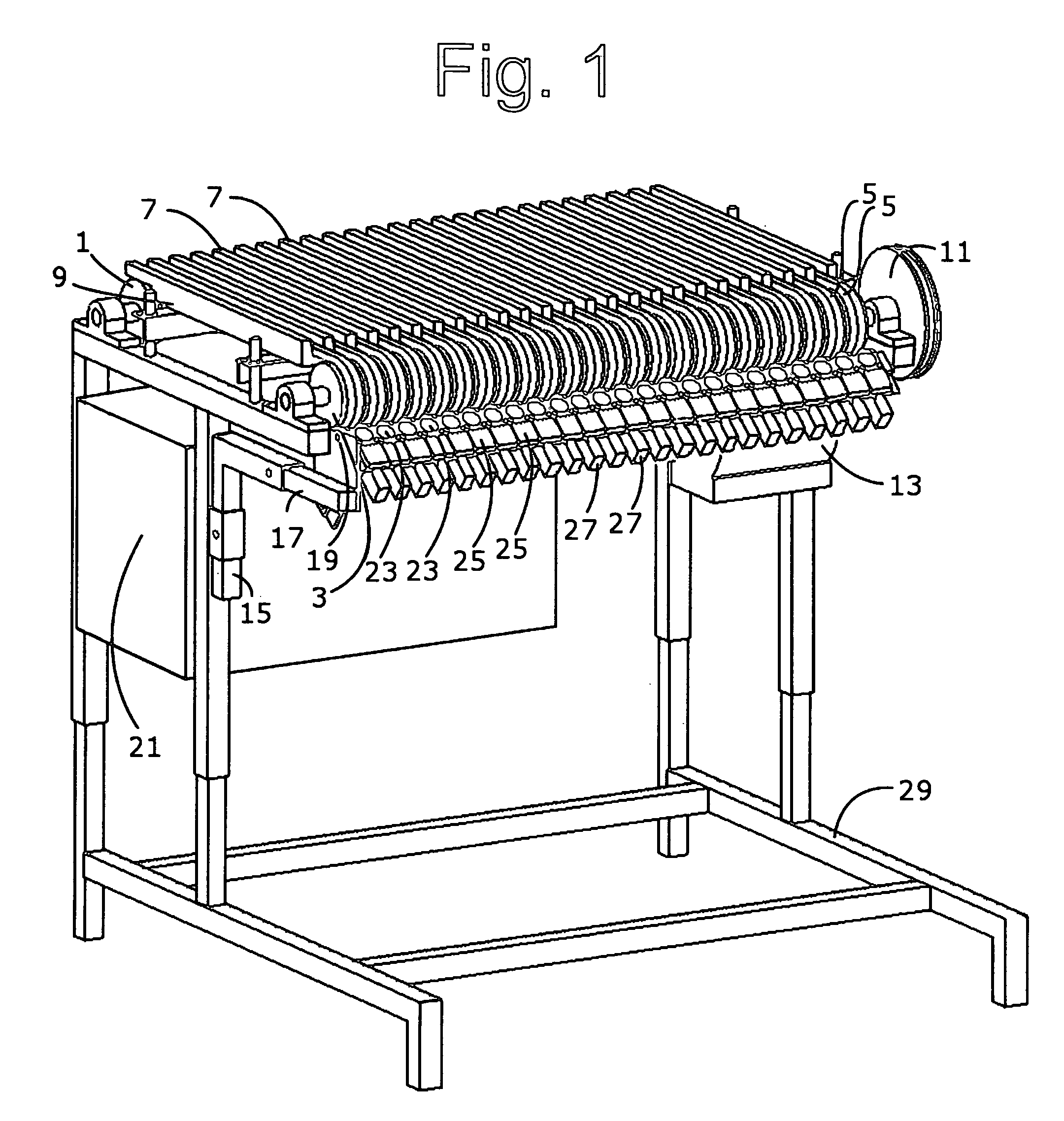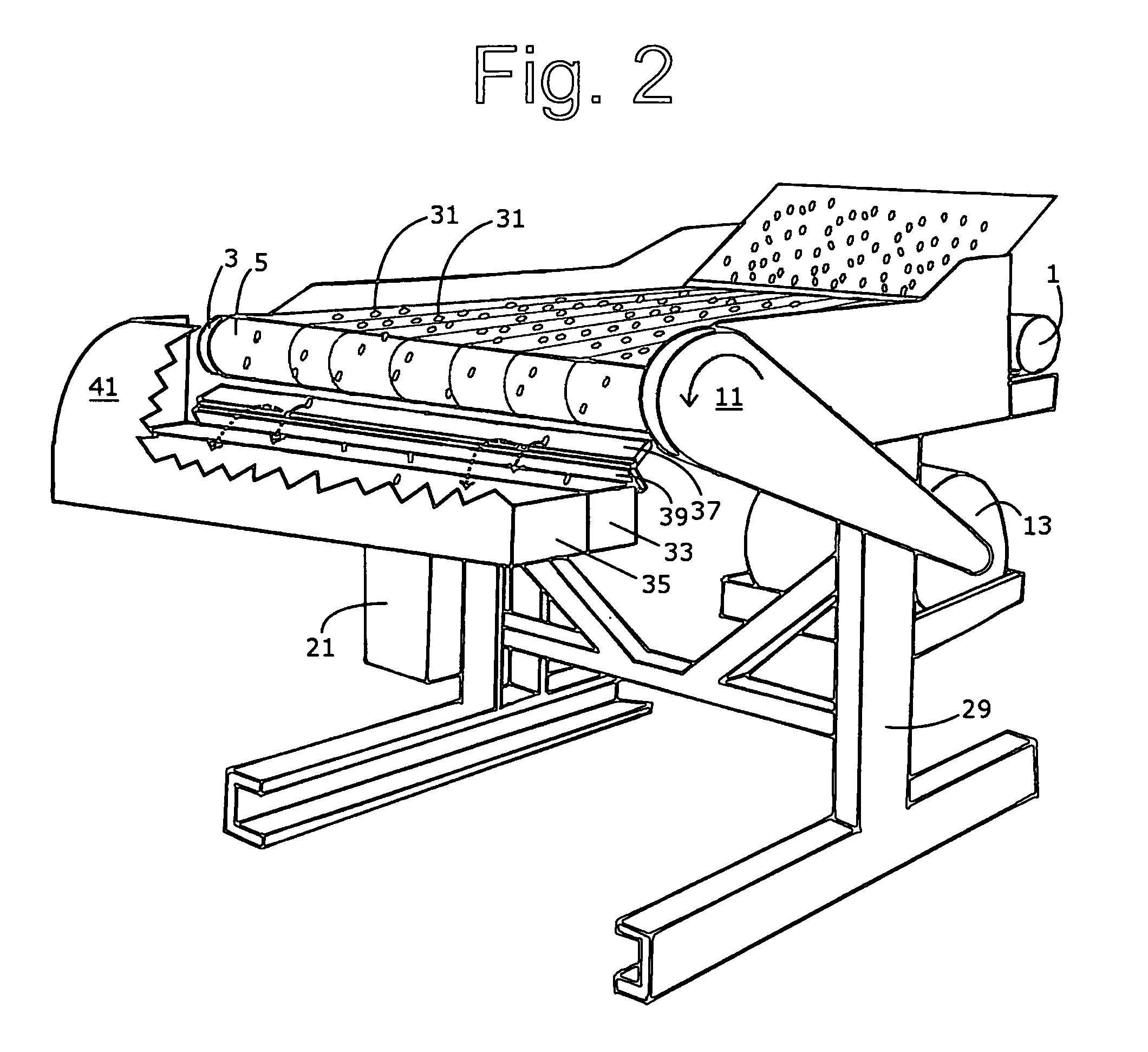System and method for automated tactile sorting
a sorter and tactile technology, applied in the field of automatic piezoelectric sensor-based sorters, can solve the problems of sensor electrical response diminishing or degrading, and achieve the effect of constant velocity
- Summary
- Abstract
- Description
- Claims
- Application Information
AI Technical Summary
Benefits of technology
Problems solved by technology
Method used
Image
Examples
Embodiment Construction
[0034]Although described in this application in relation to an automated piezoelectric tactile sorter primarily intended for sorting of cranberries, the embodiments described apply generally to all forms of sorters capable of sorting small objects based on tactile characteristics, mass, and force exerted by a small object on a the piezoelectric sensor.
[0035]Softness of an object can be indicative of other properties of the object. In agriculture, excessive softness can indicate decay. Excessive hardness, on the other hand, can indicate immaturity of an object. Ability to accurately and precisely detect and separate objects based on softness, mass, or density is one of the significant challenges in the food industry.
[0036]FIG. 1 is a detailed drawing showing one embodiment a tactile sorting system. The system includes a delivery module comprised of a delivery board 9, fins 7, front roller 3, rear roller 1, delivery belts 5, drive motor 13, drive sheave 11, sensing surfaces 23, actuat...
PUM
| Property | Measurement | Unit |
|---|---|---|
| voltage | aaaaa | aaaaa |
| threshold | aaaaa | aaaaa |
| softness | aaaaa | aaaaa |
Abstract
Description
Claims
Application Information
 Login to View More
Login to View More - R&D
- Intellectual Property
- Life Sciences
- Materials
- Tech Scout
- Unparalleled Data Quality
- Higher Quality Content
- 60% Fewer Hallucinations
Browse by: Latest US Patents, China's latest patents, Technical Efficacy Thesaurus, Application Domain, Technology Topic, Popular Technical Reports.
© 2025 PatSnap. All rights reserved.Legal|Privacy policy|Modern Slavery Act Transparency Statement|Sitemap|About US| Contact US: help@patsnap.com



